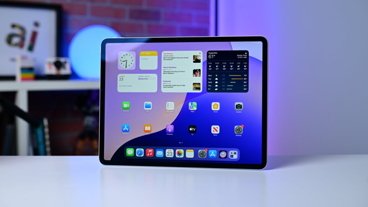Apple's component suppliers will start shipping parts for both a next-generation iPad and iPad mini late in the third quarter, says well-connected KGI analyst Ming-Chi Kuo, with mass production and release to follow shortly thereafter.
In a research note obtained by AppleInsider, Kuo said he expects Apple's iPad business to transition late in quarter three with component shipments and initial assembly of the "iPad 5" and "iPad mini 2." The analyst is quick to note, however, that the new iPads' build schedule likely preclude the tablets from being unveiled at Apple's Sept. 10 media event.
The late refresh cycle for the iPad 5 is due to a rumored redesign that will bring the device more in line with the existing iPad mini. These changes will affect mass production, which won't happen until quarter four, Kuo said. The analyst also predicts the iPad 5 to boast TDD-LTE support, a somewhat exotic cellular protocol used by China Mobile.
As for the second-generation iPad mini, Kuo expects the tablet to have a Retina display and next-generation "A7X" processor, which will also be used in the iPad 5. The extra horsepower is needed to drive the high-resolution screen, Kuo said, though it is unclear if the system-on-chip will be under clocked to preserve battery life.
According to the analyst, Apple pulled in the launch timeline for the "iPad mini 2" to contend with an expected range of competing small form factor tablets using high-resolution displays. This suggests the company's original plan was to debut the second-gen device in 2014.
Instead, Kuo predicts a second, less-expensive iPad mini model will be released next year. To cut down on parts costs, the current model's screen will be carried over to the budget tablet, as will a processor based on Apple's existing A6 architecture.
Interestingly, Kuo's supplier estimates show that the iPad 2 will remain in Apple's stable, which would suggest the company is planning to market two tablet tiers to consumers: Retina and non-Retina. A similar scenario is playing out with the MacBook Pro lineup.
Hon Hai, better known as Foxconn, is to handle production of all next-gen 9.7-inch iPads and will share responsibility for the iPad mini 2 with Pegatron and Casetek. Pegatron is thought to up its share of iPad mini production to between 70 and 75 percent in the third quarter, and 80 to 85 percent in the fourth, up from 60 to 65 percent in quarter two.
Kuo sees Apple launching both the iPad 5 and iPad mini 2 by year's end, though a specific date range has yet to be established.
 AppleInsider Staff
AppleInsider Staff




-xl-m.jpg)


-m.jpg)






 Chip Loder
Chip Loder
 Thomas Sibilly
Thomas Sibilly
 Wesley Hilliard
Wesley Hilliard
 Christine McKee
Christine McKee
 Amber Neely
Amber Neely
 William Gallagher
William Gallagher
 Malcolm Owen
Malcolm Owen









47 Comments
Yeah, but there were rumors of a low cost iPhone for several years before it happened, I mean will happen.
Hmm... interesting... a "less-expensive" iPad mini... Is it just me or is this "new trend" in Apple's strategy a bit concerning?
I would say that a "less expensive" iPad mini only makes sense if the one they are debuting soon is actually more expensive than the current one, which seems like a ridiculous proposition. They have "gone retina" on almost their entire product line without increasing prices, why would a retina mini cost more? And if it stays the same price as expected, it's currently one of the cheapest, best mobile computers you can buy.
Just over $320 is a ridiculously low price already for what it is. Unless they are going to flood the market with cheap (under $100) plastic iPads I don't see the point, and anyway if they did that, why not make cheap regular sized iPads as well?
It wouldn't have anything to do with the fact that we already know that iPads won't be on the program for Sept. 10? Analysts, ffs.
[quote name="eckergus" url="/t/159357/apples-ipad-5-and-ipad-mini-2-on-track-for-q4-release-low-cost-mini-coming-in-2014#post_2390197"]Hmm... interesting... a "less-expensive" iPad mini... Is it just me or is this "new trend" in Apple's strategy a bit concerning?[/quote] Apple has done this often when a market gets mature for a device. Apple can still maintain good margins by opening a new market with a new product category. Apple is wise to not ignore price erosion as a market matures, yet by offering a two-tier product offering Apple can maintain its caché place in the market while skimming some of the middle market too.